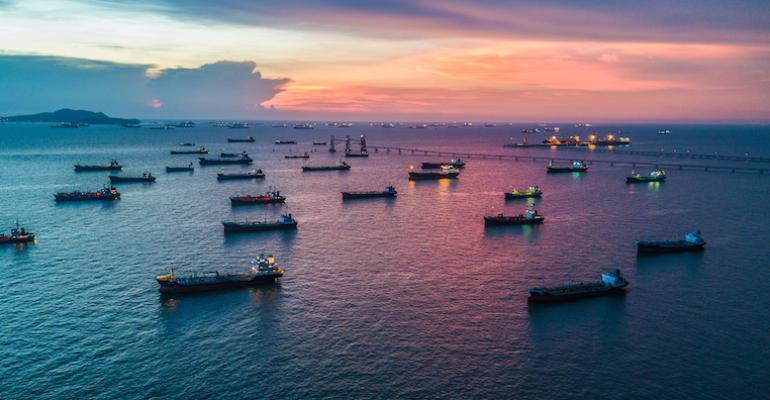David Lademan, Senior Pricing Specialist, Global Container Freight Markets, S&P Global Commodity Insights began the day with an overview of the container and tanker markets during the past few years- offering a few insights into what might lie ahead, as well. The lively chart patterns underscored the realities of trades moving in different directions - with the tanker markets at relative highs, while the container market has plunged back to earth from its record peak in 2021.
The big focus in the container market is “normalisation”, with the S&P data indicating that reliability has improved-now exceeding 50%, while congestion has decreased. The presentation showed another aspect of the return to normal- with rates plummeting along with reduced import demand into the States, against the backdrop of excess inventories.
Another index, that of reliability, dropped slightly during January, which Lademan described as “normal, due to the Lunar New Year…not a sign to worry or that the market is deteriorating.” S&P did hint at further rate reductions on the horizon in this season of contract renewals as rates have settled out at multi-year lows, with slides suggesting that “carriers have been unable to stem the tide via traditional means, and are now engaged in what can be considered a price war.”
Looking specifically at the US facing routes, the westbound trans-Atlantic route - still up above $4,000 per feu, having benefitted greatly as cargo shifted from the US West Coast - was called out as “slow to normalise”, as rates make their way down.
The major routes, with Asian cargo coming inbound to the States, have seen reduced volumes; S&P suggested that Asian imports into the US are at their lowest levels in three years with China’s share of US imports dropping to 40.7% in 2022, down from 42.4% two years earlier. Southeast Asia has seen gains with trade nearly doubling since 2018, to more than 5 million teu.
As far as the tankers it was a much more positive picture. There is perhaps a new normal, with “tight tonnage lists” and rates “likely to remain elevated” for a while, according to the presenter.
The impacts of the war in Ukraine are well known - much higher levels - with “a rising tide lifting all boats” and much more volatility, also hastened by the low product stocks. The presentation went over well-known territory of increased tanker ton mile demand as a result of the shifts following the Russian invasion of Ukraine in February 2022. US crude exports have shifted- with Europe now taking shipments that previously went to China; Platts indicates that 2022 crude barrels to Europe, nearly 1.5m bpd rose 39% compared to 2021.
As the flows changed, VLCC use surged in 2022, up eight-fold, to 15.9 million mt in 2021, with a suggestion that VLCC’s will set the tone and direction of the market. In looking at crude exports out of the US Gulf/ Caribs, the slides were showing that Suezmaxes’ share of vessel loadings actually gained the most- up to 28 vessels permonth in 2022.
A broader economic concern that came through is the impact of tanker freight on longer run inflation. Looking at the example of trades into Latin America, Lademan pointed out that the freight costs now exceed the historical threshold of 5% of overall cost on the long haul routes. He highlighted, in particular, the importation of gasoline from the US Gulf coast refineries into Brazil- noting that Freight/Import Parity Prices (IPP) have ranged between 5% and 10%.
Copyright © 2024. All rights reserved. Seatrade, a trading name of Informa Markets (UK) Limited.
Add Seatrade Maritime News to your Google News feed.  |

